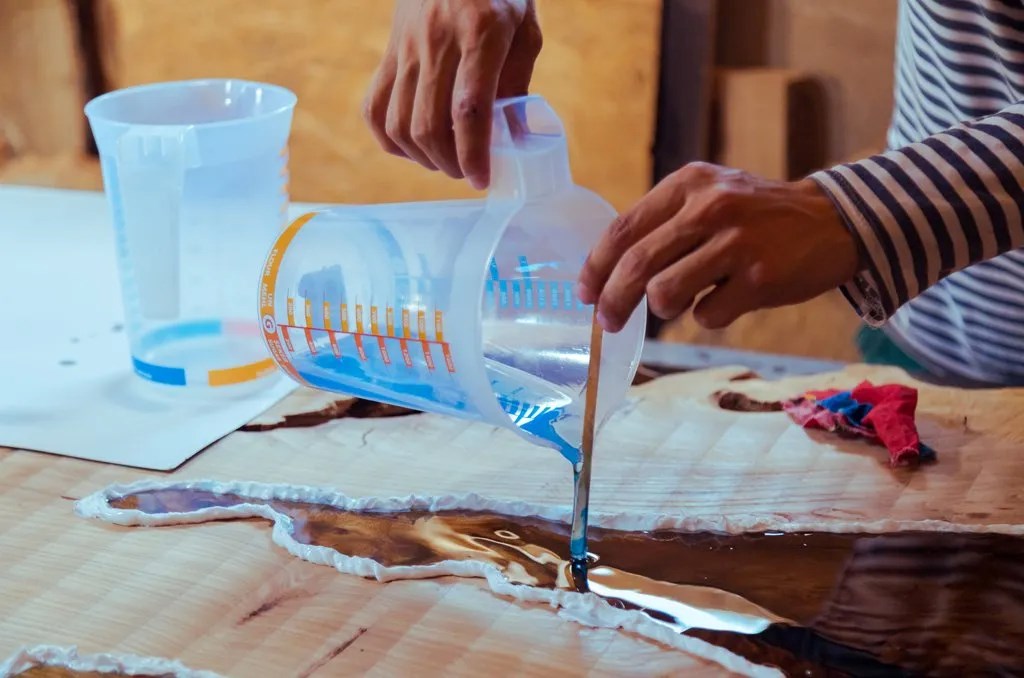How to Use Two-Part Epoxy Adhesive
Published date: 12 August 2024

Two-part epoxy adhesives are a reliable and versatile choice for bonding various materials, including plastics, brick, concrete, metals and many more. In this guide, we’ll walk you through the essential steps for using a two-part epoxy adhesive, ensuring that you get the best results every time. We’ll also highlight Loctite EA 3450 Epoxy Adhesive, a high-quality option for those needing a robust and fast-curing bond.
Step 1: Gathering the Necessary Materials
Before starting your project, ensure you have the appropriate materials and tools on hand. You’ll need:
Two-part epoxy adhesive: Choose a high-quality product like Loctite EA 3450. This two-component epoxy adhesive is effective on a range of substrates (including metal, ceramic and rigid plastics) and suitable for various applications, thanks to its high strength and gap-filling capabilities.
Mixing tools: Depending on the mixing method (discussed later), you might need a mixing nozzle or a simple mixing stick.
Weight scale or volumetric cups: Essential for accurately measuring the resin and hardener if you are hand mixing the components.
Protective gear: Gloves and safety glasses are essential to protect your skin and eyes from the adhesive.
Step 2: Surface Preparation
Proper surface preparation is key to achieving a strong bond with two-part epoxy adhesive. Remove any dirt, grease, or debris from the surfaces to be bonded. Pay close attention to removing oil, as it can significantly weaken the bond. Use a cleaning solvent for best results. If possible, lightly sanding the bonding surfaces to roughen them will help the epoxy adhere better by increasing the surface area. By thoroughly preparing the surfaces, you maximise the adhesive’s bonding potential, resulting in a stronger and longer-lasting bond.
Step 3: Mixing the Epoxy Adhesive
Mixing the two components of your epoxy adhesive correctly is essential for the curing process and the strength of the bond. There are three common methods for mixing:
Hand mixing: After weighing the components, squeeze equal parts of the resin and hardener onto a clean surface and mix them thoroughly with a metal stick until the mixture is uniform in colour. This method is ideal for small applications and low-volume production.
Cartridge mixing: Many two-part adhesives, including Loctite EA 3450, come in dual cartridges that automatically dispense the correct ratio of resin and hardener. Attach a mixing nozzle to the cartridge and dispense the mixed epoxy directly onto the surface. This method ensures accuracy and is convenient for medium-to-large production runs.
Meter mixing: For larger industrial applications, automatic meter mixing systems can be used. These machines measure, mix, and dispense the adhesive, ensuring consistency and saving time.
Whichever method you choose, it’s important to mix thoroughly to avoid the formation of air bubbles, which can cause weak spots in the adhesive bond.
Step 4: Curing
Once the epoxy is applied, allow it to cure according to the manufacturer’s instructions. For Loctite EA 3450, curing occurs in approximately 15 minutes at room temperature.
Leave the adhesive undisturbed: Ensure the bonded surfaces are held together securely and not disturbed during curing.
Check the bond strength: After curing, the adhesive will form a strong bond, filling any gaps in the surfaces.
By following these steps, you can achieve a strong, durable bond with your two-part epoxy adhesive. Whether you’re using Loctite EA 3450 or another two-part adhesive, proper application and curing are key to success.
At Conro Electronics, we’ll show you how to improve product reliability while increasing performance and lowering costs. Our team of technical support specialists will provide your company with dependable global supply, unrivalled efficiency, and superior technical support.
Feel free to contact us on 0208 953 1211 or send us an email to info@conro.com




Comments
There are currently no comments, be the first to comment.